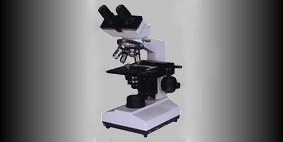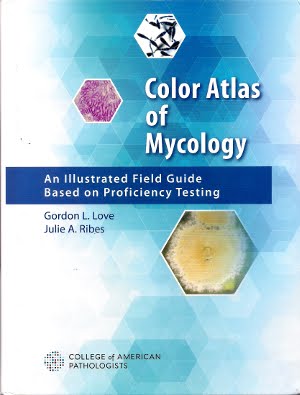Scopulariopsis brevicaulis (Teleomorph: Microascus brevicaulis?*) Fungus
Compare to Scopulariopsis brumptii.
Ecology: Cosmopolitan distribution. The genus has many species - frequently isolated from soil as well as plants and insects.
Pathogenicity: Weakly karatinolytic, S.brevicaulis has been implicated in cases of onychomycosis. Other conditions such as endopthalmitis & endocarditis and skin lesions have also been reported. As with many opportunistic fungi, immunocompromised patients may be at greater risk of infection.
Physiology: The optimal growth range is between 24 – 30oC, with a maximum of 37oC.
Macroscopic Morphology: Colonies (SAB at 30oC pictured below) exhibit moderately rapid growth, reaching maturity in about one week. Colonies are velvety to powdery in texture. Colour may start off as white, quickly becoming a pinkish-brown or buff to cinnamon. Reverse is a honey to golden-brown in colour. Colouration varies with each Scopulariopsis species.
Scopulariopsis brevicaulis on SAB after 5 days at 30
oC.
Microscopic Morphology: Hyphae are hyaline and septate. Conidophores extend from hyphae and terminate in brush-like groups of 2 – 4 annellophores (conidiophores). Annelloconidia are globose to ovoid with a truncate base, about 5-9 X 5-7 µm in size and have a fine to coarsely roughened wall texture.
Scopularioposis brevicaulis is frequently encountered in the laboratory and can be distinguished from Scopulariopsis brumptii as the latter has short swollen conidiophores and has a grey to greyish-black appearance macroscopically.
*Teleomorph – sources differ. One states there is no teleomorph for this species while another states Microascus brevicaulis is its teleomorph stage. I’ll leave this discrepancy to be pursued by those interested.
Note: Size may appear to vary between photos of equal magnification due to cropping of photos prior to posting. The DMD-108 microscope has an additional 10X digital magnification factor that can be added to the optical magnification of each particular objective. While I try to take accurate note of each magnification used, errors on my part will undoubtedly occur when taking perhaps hundreds of photos on each organism. While magnification obviously increases the size of the structure being viewed, you may wish to give more weight to the detail and/or resolution of the the magnification provides.
(Click on any photo to enlarge for better viewing)
Scopulariopsis brevicaulis -Slide culture at 48hrs (LPCB X100)
(not much detail to see but included just for scale)
 Scopulariopsis brevicaulis
Scopulariopsis brevicaulis -Slide Culture (LPCB X250)
 Scopulariopsis brevicaulis
Scopulariopsis brevicaulis - brush-like structure of annellophores (conidiophore) bearing annelloconidia (LPCB X400)
Scopulariopsis brevicaulis - younger culture showing chains of annelloconidia extending from individual annellophores (conidiophores) (LPCB X400)
Scopoulariopsis brevicaulis - brush-like arrangement of annellophores bearing annelloconidia
(LPCB X400)

Scopulariopsis bdrevicaulis - a closer look at the brush-like structured described above. Note the rough texture on the conidia walls.
(LPCB X1000)
 Scopulariopsis brevicaulis
Scopulariopsis brevicaulis (LPCB X1000)
Okay, maybe too many photos, but I always get frustrated while consulting even the best fungal reference books and finding one tiny B&W photo crammed in at the bottom of the page which attempts to illustrate every feature. I think seeing several photos, even of the same structure, gives one a better perspective on the organism's characteristics.

(Ditto)
 Scopulariopsis brevicaulis
Scopulariopsis brevicaulis - Brush-like branched annellophores bearing annelloconidia.
(LPCB X1000)
 Scopulariopsis brevicaulis
Scopulariopsis brevicaulis Annelloconidia- Okay, last photo. Note the ovoid structure of the annellocondia - 'annello' because of the truncated (flattened) base where they were attached to the annellophore, or simply the conidiophore. (LPCB X1000)
 Scopulariopsis brevicaulis - brush-like structure of annellophores (conidiophore) bearing annelloconidia (LPCB X400)
Scopulariopsis brevicaulis - brush-like structure of annellophores (conidiophore) bearing annelloconidia (LPCB X400) Scopulariopsis bdrevicaulis - a closer look at the brush-like structured described above. Note the rough texture on the conidia walls.
Scopulariopsis bdrevicaulis - a closer look at the brush-like structured described above. Note the rough texture on the conidia walls.

















.jpg)























